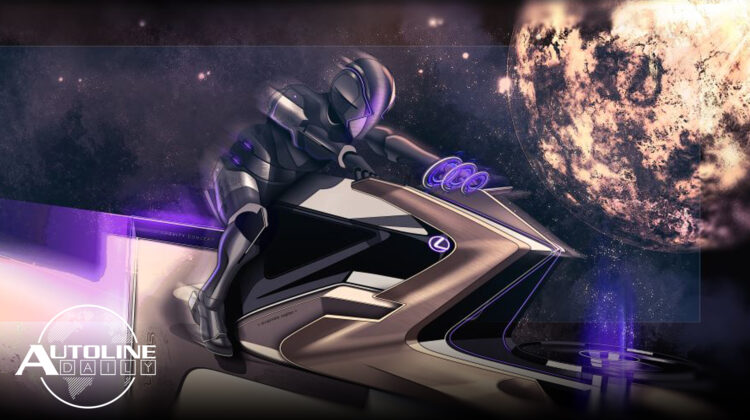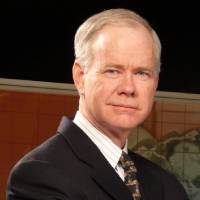
Follow us on social media:
Runtime: 7:31
0:07 FCA Confirms Foxconn Talks
0:39 Canadian Billionaire Seeks Aston Stake
1:22 Palladium Soars to Record Highs
2:20 Commercial Van Sales Up In 2019
3:12 Lune Wave Develops Improved Radar
4:08 Toyota Realigns Production
4:59 Lexus Creates Lunar Mobility Concepts
5:50 Subaru To Go All Electric by Mid-2030’s
6:31 Production Lucid Air to Debut In New York
Visit our sponsor to thank them for their support of Autoline Daily: Bridgestone.
This is Autoline Daily with the latest news in the global automotive industry.
FCA CONFIRMS FOXCONN TALKS
On Friday, we reported about FCA forming a joint venture with Foxconn to manufacture electric cars in China. At the time, neither company had commented publicly but later that day FCA confirmed it is in talks with Foxconn. The automaker said it’s in the process of signing a preliminary agreement with Foxconn and that they hope to have a binding agreement in the next few months. FCA is way behind its competitors in China and with electric cars, so this partnership will help plug that gap.
CANADIAN BILLIONAIRE SEEKS ASTON STAKE
A week ago, the hot rumor was that Chinese automaker Geely was in talks to buy Aston Martin. But then the Canadian billionaire Lawrence Stroll swooped in to buy it instead. Lawrence Stroll is the father of Formula One driver Lance Stroll. Not only is he funding his son’s racing career, he even bought the team he races for, Racing Point. Up to now, Aston Martin has been the title sponsor for the Red Bull racing team. But if Lawrence Stroll ends up buying Aston Martin, it’s expected that will become the name of his racing team. Meanwhile, Red Bull needs to go find another title sponsor, which reportedly goes for about $50 million a year.
PALLADIUM SOARS TO RECORD HIGHS
Due to stricter emission rules around the globe, automakers have been buying more and more palladium, a precious metal used in catalytic converters. There’s now a shortage and that’s caused the price of palladium to skyrocket to record highs. Reuters reports that an ounce is now more than $2,500, its highest ever. That’s up from $500 an ounce in January of 2016 and before this rally, palladium had never exceeded $1,100 per ounce. And the situation isn’t expected to get better any time soon. Analysts are predicting shortfalls in palladium supply this year and next, which means prices will continue to climb.
COMMERCIAL VAN SALES UP IN 2019
New car sales in the U.S. topped 17 million for the fifth year in a row in 2019, including heavy-duty trucks, and that’s what so many headlines focused on. But one part of the market that flew under the radar was the commercial van segment. Automakers sold 442,000 commercial vans last year, up 9% while the total market was down 1.4%. Commercial sales are an ever more important part of the business for GM, Ford and FCA, and even Mercedes-Benz. It’s a profitable segment that’s growing and is less cyclical than the retail market. The four top sellers are the Ford Transit, Chevrolet Express, Ram ProMaster and Mercedes-Benz Sprinter.
| U.S. Commercial Van Sales 2019 | |
|---|---|
| Ford Transit | 119,000 |
| Chevrolet Express | 62,500 |
| Ram ProMaster | 56,000 |
| Mercedes-Benz Sprinter | 35,372 |
| Source: Wards Intelligence | |
LUNE WAVE DEVELOPS IMPROVED RADAR
As automakers move their way towards Level 3, 4 and 5 autonomous cars they have to add 5 to 6 radar units to their cars to get a 180-degree view around a car. But a startup company called Lune Wave says they only need one unit with the new radar that it’s invented. Traditional automotive radars have a range of 150 meters, the Lune Wave can see 300 meters away. Traditional radars have a resolution of 2.5 to 3 degrees, the Lune Wave has a resolution down to 0.5 degrees. The secret is in the software and the 3D printed antenna that almost looks like a mini Death Star. The technology is so promising that Toyota, BMW and Continental invested in the company. While the Lune Wave radar is not cheaper than a traditional unit, if you only need one instead of 5 or 6, it represents a real cost reduction.
TOYOTA REALIGNS PRODUCTION
Toyota is making a number of changes to where its vehicles are made in North America. And it’s all about lining up production based on platforms and common architectures. It’s Indiana plant, which recently completed a major update, will now focus on production of mid-size SUVs and vans, including the Highlander, Highlander Hybrid and Sienna. The Toyota Sequoia will no longer be made there and will move down to Texas, which will now only make full-size body-on-frame pickups and SUVs. That move pushes out the Tacoma. The mid-size truck will now be built in Mexico. Toyota says these moves will not result in any job cuts.
LEXUS CREATES LUNAR MOBILITY CONCEPTS
Toyota has a history of developing technology, such as robots or vehicles, for space travel. And now its luxury brand is creating futuristic concepts for moon travel. Lexus was asked to contribute design sketches of a lunar mobility concept for the art and design magazine Document Journals. The concepts were created by its European design studio, who ended up making a series of 7 concepts from five designers. The concept selected to appear in the print version of the magazine is called Zero Gravity. It’s a motorcycle like vehicle that uses magnetic levitation and features a reinterpreted version of Lexus’s spindle grille. We don’t have time to detail all of the concepts but to learn more about the others, just click the link in today’s transcript or in the description box below.
SUBARU TO GO ALL ELECTRIC BY MID-2030’S
Subaru is known for its boxer engines, but by the mid-2030’s the Japanese automaker says it will only sell electric vehicles worldwide. Since Subaru is a smaller company it’s partnering with Toyota to help cut development and manufacturing costs. Subaru will develop a strong hybrid using Toyota’s technology as well as work on a full electric car with Toyota, which are both scheduled to come out later in the 2020’s. While it’s using Toyota’s hybrid technology, Subaru says it still wants vehicles that are distinctly Subaru. So, we expect only AWD to be offered and plenty of commercials with dogs.
PRODUCTION LUCID AIR TO DEBUT IN NEW YORK
And speaking of electric vehicles, another startup is getting closer to launching its first car. The production version of the Lucid Air will debut at the New York Auto Show in April. Lucid has some good people on board. CEO Peter Rawlinson comes from Tesla and lead designer Derek Jenkins made a name for himself at Mazda. The company currently has 80 prototypes working out the final kinks, while it also continues to build its factory in Arizona, which it expects to be up and running by the 4th quarter of this year, and build its sales and service network. Refundable pre-orders of $1,000 for the Lucid Air can be made now.
But that wraps up today’s show, thanks for watching and please join us again tomorrow.
Thanks to our partner for embedding Autoline Daily on its website: WardsAuto.com

John McElroy is an influential thought leader in the automotive industry. He is a journalist, lecturer, commentator and entrepreneur. He created “Autoline Daily,” the first industry webcast of industry news and analysis.





